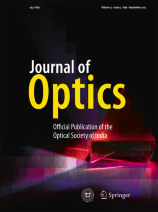
This study investigates the impact of self-focusing on higher harmonic generation (HHG) within a pre-formed, collisionless parabolic plasma channel. A \(q\)-Gaussian laser beam’s non-uniform intensity profile induces a ponderomotive force, leading to carrier redistribution and a transverse density gradient. This gradient excites a plasma wave that interacts with the laser, generating HHG. Using moment theory, we derived a differential equation describing the laser beam’s spot size evolution and numerically solved it to analyze the effects of laser intensity, wavefront distortion, plasma density, channel depth, and harmonic order on beam width and HHG yield. Our findings contribute to understanding the interplay between self-focusing and HHG in parabolic plasma channels, providing valuable insights for optimizing HHG efficiency.

This study explores how an intense laser beam with a quadruple Gaussian profile behaves as it travels through a collisional plasma that exhibits nonlinear absorption. The Drude model is used to describe the plasma’s dielectric properties under this nonlinearity. The analysis relies on numerically solving the nonlinear Schrödinger wave equation (NSWE) for the laser beam’s field, employing the moment theory approach within the W.K.B approximation. Through simulations, the researchers investigate how various laser and plasma parameters influence the beam’s propagation characteristics. They specifically focus on how the beam’s width and longitudinal phase change as it travels through the plasma.



